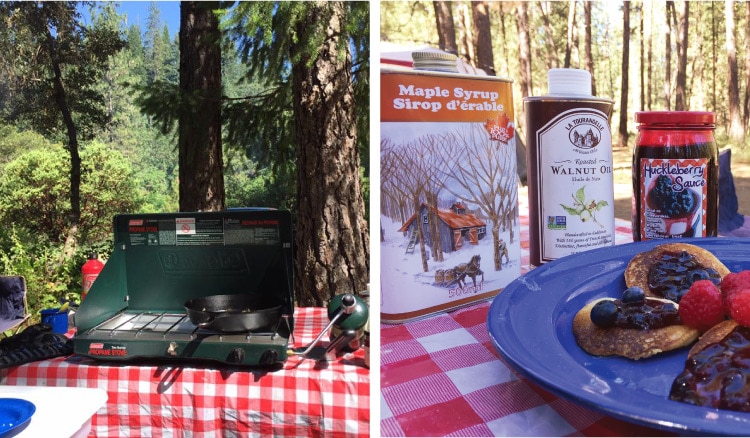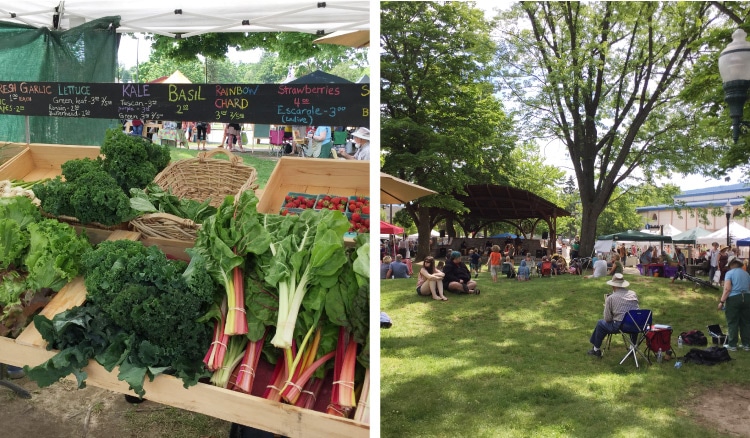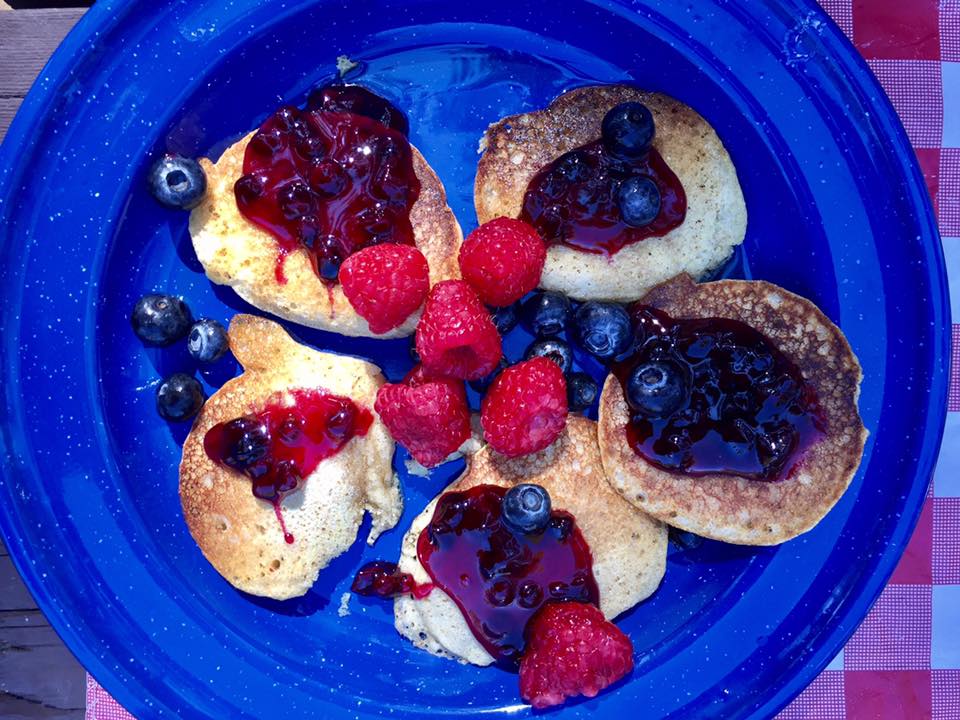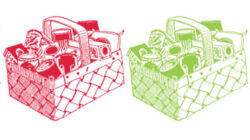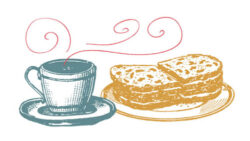As summer winds down, I’ve been reflecting a lot on the camping road trip my family and I did earlier this summer. We covered 3,400 miles in a loop through Tahoe, Glacier, Banff, Jasper, Lake Louise and back down through the Pacific northwest, passing through more national forests along the way. We had some gorgeous camping spots, and the scenery was especially breathtaking through the Canadian Rockies.
What I didn’t anticipate being such a highlight of the trip however was sampling all the local food! We hit up farmers markets, bought local produce, had phenomenal Indian curry, melt-in-your-mouth tender little strawberries, the most amazing carrots (I couldn’t stop raving about them every time I ate them), homegrown maple syrup, delightful scones in a creative variety of flavors, and—my favorites!—huckleberry syrup, sauce and jam, among many others.
Breakfast was the highlight of my day, most mornings having buckwheat pancakes with fresh local berries topped with maple and huckleberry goodness. Mmmm… nothing like waking up in nature to delicious pancakes!
What I really loved though was seeing all the handcrafted deliciousness at the farmers markets and fruit stands, meeting the people behind the food, hearing their stories and knowing I was supporting their endeavors. I could feel the love and care they put into their creations, and I felt more connected to the places I was visiting by discovering the local culinary creations.
This is the emotional connection to food.
For food producers, it’s easier to strike an emotional connection with the consumer when you can be there in person to present and market it. But how can you recreate this on the retail shelf when the product has to speak for itself?
I’ve written a few how-to articles on this [Emotional Connection in Packaging Design, How to Develop Your Brand Story (And Why It’s Important), Tell a Story with Food, How to Enhance Your Brand with Your Story], but in general the most important thing to keep in mind is that on the packaging, you want to represent everything unique about your product, visually and through words. When you are quirky, personal, real and honest, consumers take notice compared to bland, corporate marketing speak that is so often the default.
When you share part of yourself through your packaging and message, you become more than just a brand, and your food becomes more than just a product. The food comes alive and delights the consumer. The brand inspires and shines. These feelings enhance the experience when the food is consumed, and help to create lasting impressions in the consumer’s mind.
On our final days of the trip we had an eclectic assortment of food left, and I marveled at how we were combining the remainders into meals that were comprised of foods from our travels. Each time I consumed the foods, I thought of the people who produced them, their stories and places. Their emotional connections run strong!




